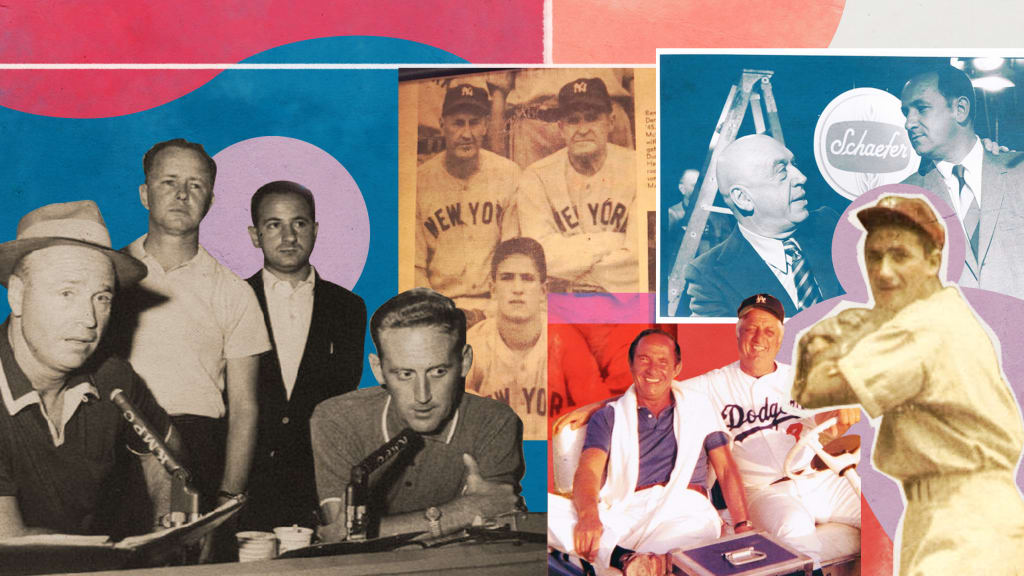
You know the names of the stars and superstars, the players whose bronzed faces line the Hall of Fame. You know the names of executives and managers, owners and broadcasters. But would you believe there’s another person at the center of an unbelievable amount of baseball history and you don’t know his name? Can you imagine that there is one person who oversaw Dodgers broadcasts as the mic passed from Red Barber to Vin Scully, who played a part in hiring both the first Spanish-language broadcaster and then later the designer of the iconic MLB logo? He turned Yogi Berra into a movie critic, Tommy Lasorda into a radio host, and heck, even Don Draper from “Mad Men” may have been loosely based on him.
What’s his name? It’s Tom Villante. And he has a life that’s just loaded with stories.
Now in his 90s, you can see how Villante managed to be a part of so many historic moments when you speak to him for a minute. He is energetic and enthusiastic, punctuating most stories with an "It’s terrific."
He's seen everything and done almost as much. Here are some of those tales:
The Batboy
Villante, who grew up in Queens, got his start as the Yankees batboy. Well, actually, let's back that up -- he got his start as the Cardinals batboy in the 1943 World Series.
Villante likes to begin most stories by saying, "What happened was," so, let’s tell you what happened. Villante was friends with the Yankees batboy that year, Chester Palmieri. But on the day that the Series began, he ran into Chester at home.
"What are you doing here?" Villante asked. "Aren't you going to the stadium?"
"I have to study for my state exams," Palmieri replied.
Like all good friends, Villante didn't miss a beat: "Do you mind if I go?"
From there, it was as if fate willed it. Villante arrived at the stadium and somehow got through the employee's entrance. Instead of kicking him out, clubhouse manager Fred Logan told him, “Go into the visiting clubhouse and you can be the visiting batboy.”
If only all gigs were so easy. But Villante's run of good luck didn't end there. After the series ended, Villante returned to see if he could get a job. Logan told him to wait outside.
"And I'm standing there outside the clubhouse and who comes out with him, but [Yankees manager] Joe McCarthy," Villante said. "He starts asking a lot of questions about school and stuff. And he said to me, 'How would you like to be the home team batboy?'"
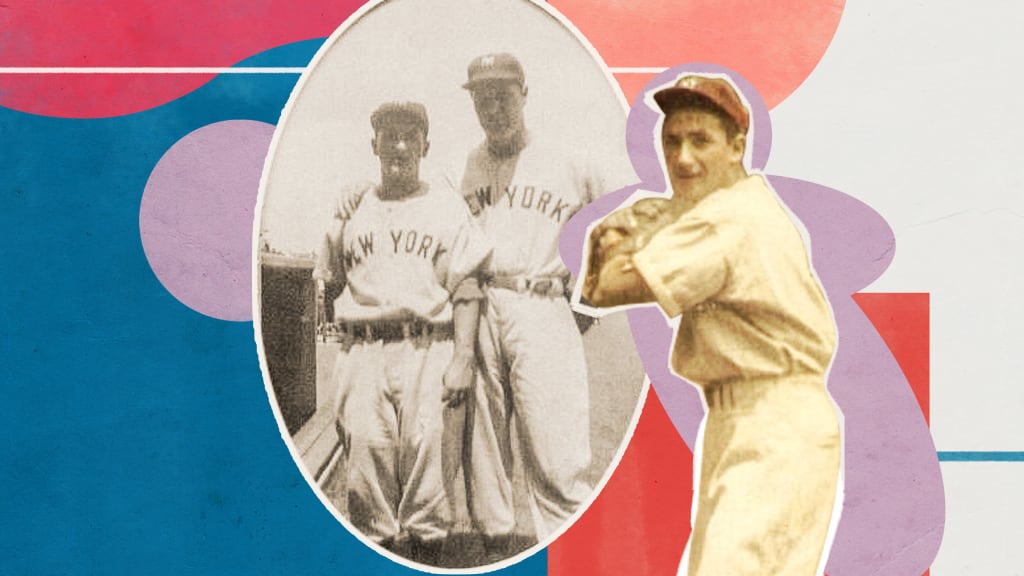
It was set: Villante received a letter from Logan that spring informing him it was time for him to report to the Polo Grounds for an exhibition against the Giants.
"One of the greatest thrills of my life was walking into the visiting clubhouse at the Polo Grounds," Villante said. "Going into the clubhouse, and there's my locker with my name on it -- spelled right -- right next to Frankie Crosetti."
Villante spent the next two years with the Yankees, and Joe McCarthy impressed the importance of the Yankee pinstripes on him.
"I remember once I was sitting with a bunch of players in Boston in the hotel lobby,” Villante said. “And McCarthy came in with his little cigar, and he took a quick glance and saw us all sitting on the steps. While waiting for the elevator, he said, 'Could this be the world champion New York Yankees sitting on the steps of a hotel lobby?' That’s part of that Yankee pride."
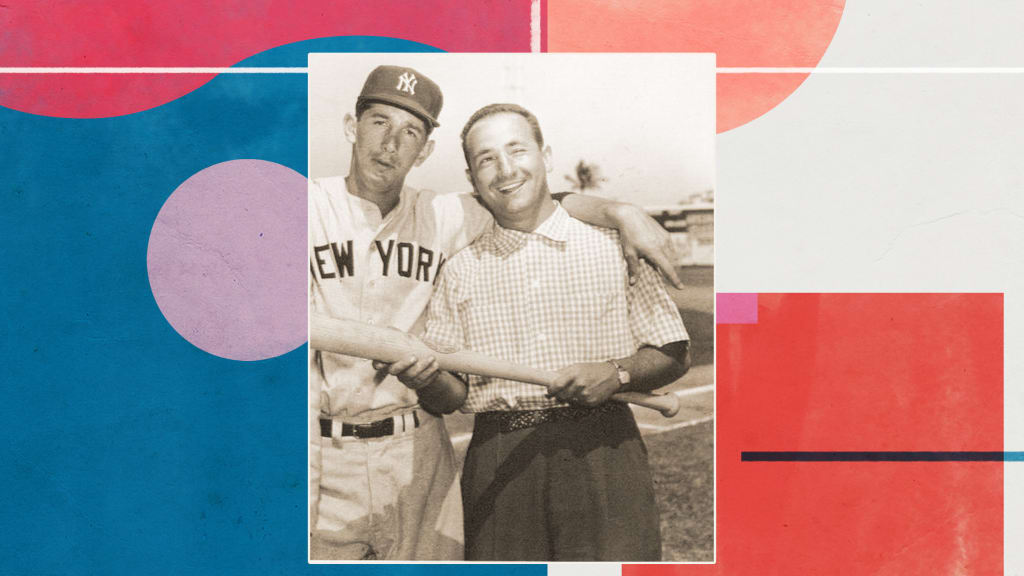
From Red to Vin
After graduating college, Villante wound up at the advertising firm BBDO in 1952. This could have been the end of his time in sports, but his bosses knew about his background in baseball. So they put him in charge of the Brooklyn Dodgers' TV and radio production.
It was a tremendous risk. After all, at the time, Villante knew nothing about these fields, so he had to be a quick study. Fortunately, everything worked out and he was successful enough that the company sent him to Los Angeles and kept him in charge of the broadcasts during the Dodgers’ first seasons on the West Coast.
That meant he was there to see the transition from Red Barber to Vin Scully.
"Red was a very serious guy," Villante remembered. "Guys like Mel Allen and Scully and Connie Desmond -- that's who they were. Red Barber, 'The Ol' Redhead,' was a role he played. When you talked to Red off camera, he had very little to say. You'd ask him how the weather is, and he'd say, 'I don't worry about things I can't control.'”
But Villante recognized Barber's genius and enjoyed getting to see him work. Knowing that most people listening to the games were on their way home in the car, Barber made sure to give the score frequently. "So, he bought a three-minute egg timer," Villante said, "and he would use that to remind him every three minutes to give the score and the situation."
Villante had a front-row seat to watch as Red helped train Scully, who would go on to become the voice of baseball.
"He told Scully, 'It's very important you make notes -- and you pick the right spots in the game to drop in those notes," Villante remembered. "So Scully would do it in the first half-inning and all his notes would be used up, and Red said, 'No, you have to pick your spot at the appropriate time.' He also said, which is very important, 'Don't ever talk over the crowd noise. For baseball, the crowd noise is our continuity thread. Don't talk over it.'”
These are things that Scully would become famous for, clearly taking the lessons to heart.
"I always let the crowd roar,” Scully said in 2016. He added, “To me, it is absolutely a symphony. I was completely enamored by the crowd noise.”
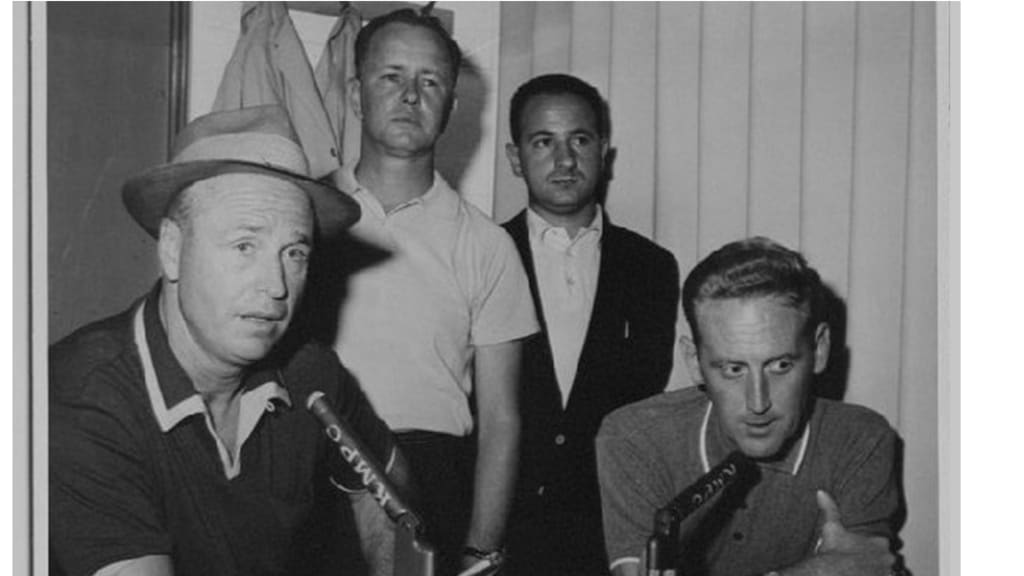
The first Spanish language broadcasts
Those weren’t the only stars that Villante worked with, though. He also had a hand in hiring Buck Canel and -- through Canel -- even the legendary Jaime Jarrín, who is still calling Dodgers games 62 years after he started.
“We knew so much of our population was Spanish and we knew they loved baseball,” Villante said. “So I hired Buck Canel, who's a famous Spanish broadcaster. I got him to start doing play-by-play in Spanish. And we ended up with a Spanish radio station, WHON, to carry the games. So, in the course of the game, we had the English speaking and the Spanish. We would take ads in the Spanish paper, and it would say, ‘Watch in English, listen in Spanish.’ They'd use the same WOR telecasts, but the audio would be in Spanish.”
Canel was placed in charge of the Spanish broadcasts and it was he who hired Jarrín. But Villante has been a fan since those first days that Jarrín got on the mic.
“When you hire a guy like Buck Canel, who's an absolute pro, [you let him] run it. When we needed the second man, he would recommend and we would hire that guy. Buck was chief, he did it,” Villante said.
“And then when we went to the West Coast, [Jarrín] ended up taking over the whole thing. Jaime was terrific.”
Jackie’s Friend
Villante wasn’t just at the periphery of these Dodgers teams, though. Being so closely involved in the broadcasts meant that he got to know and even befriend many of the team’s players. That includes the legendary trailblazer Jackie Robinson, who would later attend Villante’s wedding.
The two became close early on and often ate together in Robinson’s hotel room when Black players were barred from being in the dining room. There they'd stage putting contests against each other, overturning a glass and betting a buck per round while trying to sink the ball into the cup across the hotel carpet.
Soon, the two were heading out to Forest Park near Robinson’s home in Long Island following afternoon Dodgers games and, just like in baseball, Robinson was a quick study.
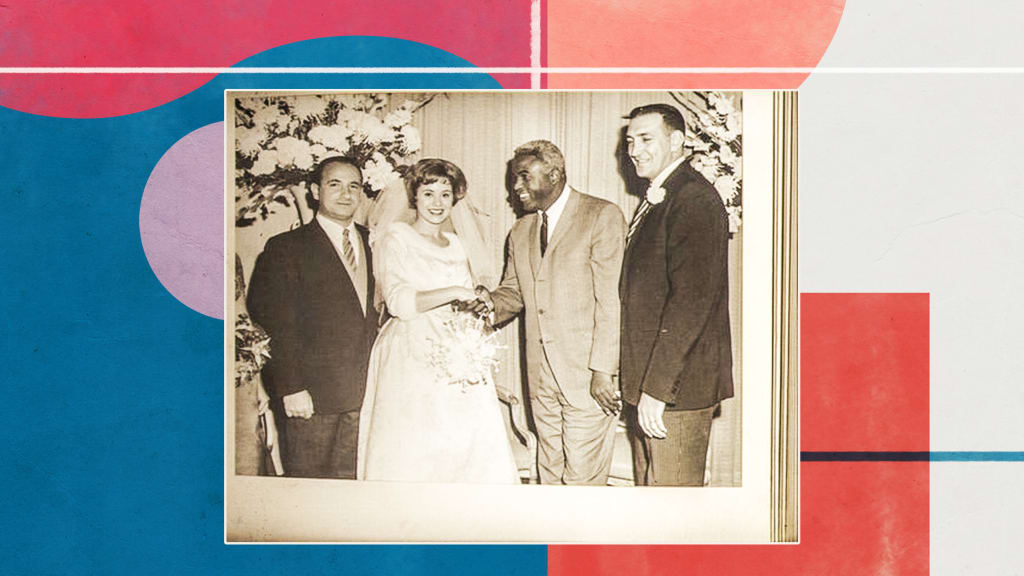
“We'd play a couple of holes,” Villante said. “Jackie never played golf before. … He wasn't smooth and he had an awkward swing, but he had terrific eye-hand coordination and he was very, very strong. For a guy who just started out, I'd watch him. He'd barely break 100. Soon he's breaking 100, he's breaking 90, he's breaking 80. I mean, he was terrific.”
Years later, long after Robinson had retired and during the 25th anniversary of his debut, the league wanted to honor Robinson for the enormous impact he made on the sport and the country. For Villante, this was not only a cause he believed in, but he wanted to do right by his friend, as well. So, he helped brainstorm the event.
The first idea was for a large banquet televised by NBC that would raise money for a Jack Robinson Jr. drug rehabilitation center -- named for Robinson’s son who had died in a car accident the year before. After that fell through, they focused on an event at the ‘72 World Series.
This idea worked out. Before a passionate World Series crowd and with Pee Wee Reese introducing his former teammate, Robinson received a plaque and gave an impassioned speech.
“I’d like to live to see a Black manager,” Robinson said that day. “I’d like to live to see the day when there’s a Black man coaching at third base.”
Nine days later, Robinson passed away. It was his last public appearance. It would take until 1975, when Frank Robinson took over Cleveland, for a Black manager to be hired.
Road radio
It seems absurd when you can easily stream every game from every team while you're nestled up in your house, but just a half-century ago, you couldn't even hear your team's game if it was on the road -- it was just too expensive. You had to wait for the paper the next day to find out how your team did.
Working in broadcast, though, Villante could do something about that.
"[Dodgers owner Walter] O'Malley always wanted to do road games. As far as he was concerned, it made more sense. You do the road games, they promote the home games," Villante said. "When I started to explore doing road games, the big problem was the cost of doing the game."
Here’s a simplified version of how Villante described it:
AT&T owned the radio lines, and it would cost $500 for each team to get the necessary wiring installed to carry a Dodgers game being broadcast in Chicago back to New York. And if the next team, like the Pirates, wanted to do the same when it was in town, it would cost the same amount.
But if there was one user who paid for all the lines, it would cost just a fraction of that fee -- $50 -- to broadcast something else over the existing setup.
Basically, imagine it like this: Rather than having to subscribe to 30 different teams' individual streaming services, you can just buy one MLB.TV account to get everything. That’s what Villante dreamed up.
So Dick Bailey -- a friend of Villante's who passed away in 1991 -- left ABC and started his own company, Sports Network Incorporated. Bailey then became the lone account holder who needed to pay only that high fee to set up the wires once.
“That's how everyone started to do road games, because it became very affordable,” Villante said.

The MLB Logo
After leaving baseball behind and returning to the advertising world, BBDO -- and Villante -- were called in by the league to lend a hand for the bicentennial in 1969. That was the year pillbox caps came into style, the "Greatest Players Ever" were announced, and the MLB logo was created.
“When I started to work with Bowie Kuhn on this thing, [Major League Baseball] did not have a logo,” Villante said. “Believe it or not, there was a logo for the American League and a logo for the National League, but nothing for Major League Baseball.”
So Villante got to commission the artist who made the famous MLB logo we all know and love. He tabbed designer Jerry Dior for the creation of the logo and therefore knows it’s definitely not based on Harmon Killebrew, which is what is often rumored.
“It's not him at all,” Villante says with a laugh. “I subcontracted it out. What I liked about [the logo] when Dior did it was that if you look at it, it can either be a right-handed or left-handed batter.”
Baseball Fever
If you ever watched TV in the 1970s or ‘80s, you likely know the tagline: “Baseball Fever: Catch It.” It was the first fully fledged advertising campaign for the league, and it worked, becoming a well-known phrase for a generation of fans.
Guess who dreamed it up? Yeah, you’re right.
“I did it for a reason,” Villante said. “In advertising, the first thing we do when we're preparing our campaign is identify the prime prospect for the product.”
Villante, who was working in the Commissioner’s Office at this time, knew exactly who that person was: They were a fan who was listening to baseball on the radio or watching on TV. He wanted to develop a strategy to get those fans “off the couch” and out to the ballpark.
“If we could convert 15 to 20 percent of the listening baseball audience to come out to the ballpark, we would jam every ballpark in the United States. So, the whole idea was to tell them, 'Something happens when you're at a ballgame that doesn't happen when you're sitting on your couch.' There's electricity -- I say you catch this fever when you're with other baseball fans at the game.”
The campaign, memorable and slick, worked. Average attendance improved from about 1.2 million when they began airing to 1.7 million per team in 1983. The campaign probably isn’t solely responsible for the growth, but it had an impact. Ask any fan who grew up around this time if they remember the commercials, and they’ll likely repeat Villante's famous tagline back to you.
---
These days, Villante doesn’t mind that his name isn’t remembered despite the impact of many of the things he worked on. That was all par for the course.
“In this business, they don't care who creates it, as long as it's out there,” Villante said. “But ‘Baseball Fever: Catch It’ -- it lasts forever.”
Of course, Villante still has ideas. How could he not? Thinking about the modern game, that’s the one thing he’d like to see more of: An emphasis on getting fans -- especially young ones -- out to the park. That’s the way to hook someone for life.
“That’s crucial, let them go through the first-time experience,” Villante said. “When you’re there and you see the crowds, it’s an experience to never forget. But the idea is to get them out there.”
Oddly enough, in a lifetime of baseball, it's not the games that he was in the dugout for, or Don Larsen's perfect game that he was in the stands for, that Villante remembers best. It's how Barber called a game:
"I remember a certain broadcast,” Villante said. “I was at the game with the Dodgers up in Braves Field. I think the Dodgers were winning, and Red looked to left field and there was a storm -- you could only see the dark cloud of the storm approaching the ballpark. It was just a matter of time before it was gonna rain and the game was gonna be stopped. Red knew that the players were trying to speed up the game so they'd make it official. So he set the whole drama. He described the clouds coming in, where they were and what was going on with the field, how they were speeding it up. It all became a side drama. That was absolutely spectacular.”
